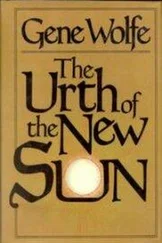Tom Wolfe - The Right Stuff
Здесь есть возможность читать онлайн «Tom Wolfe - The Right Stuff» весь текст электронной книги совершенно бесплатно (целиком полную версию без сокращений). В некоторых случаях можно слушать аудио, скачать через торрент в формате fb2 и присутствует краткое содержание. Жанр: Современная проза, на английском языке. Описание произведения, (предисловие) а так же отзывы посетителей доступны на портале библиотеки ЛибКат.
- Название:The Right Stuff
- Автор:
- Жанр:
- Год:неизвестен
- ISBN:нет данных
- Рейтинг книги:3 / 5. Голосов: 1
-
Избранное:Добавить в избранное
- Отзывы:
-
Ваша оценка:
- 60
- 1
- 2
- 3
- 4
- 5
The Right Stuff: краткое содержание, описание и аннотация
Предлагаем к чтению аннотацию, описание, краткое содержание или предисловие (зависит от того, что написал сам автор книги «The Right Stuff»). Если вы не нашли необходимую информацию о книге — напишите в комментариях, мы постараемся отыскать её.
The Right Stuff — читать онлайн бесплатно полную книгу (весь текст) целиком
Ниже представлен текст книги, разбитый по страницам. Система сохранения места последней прочитанной страницы, позволяет с удобством читать онлайн бесплатно книгу «The Right Stuff», без необходимости каждый раз заново искать на чём Вы остановились. Поставьте закладку, и сможете в любой момент перейти на страницу, на которой закончили чтение.
Интервал:
Закладка:
On May 7 Walker had cut loose the X-15 on its first real speed run with the Little Engine and reached Mach 3.19 or 2,111 miles an hour, just a shade faster than Mel Apt's world record of 2,094 miles an hour in the X-2. On May 19 Bob White took the X-15 on its first bid for maximum altitude with the Little Engine and reached 109,000 feet, which was 17,000 feet under Iven Kincheloe's record in the X-2. And that was another point that everybody should have known about… and didn't. Kinch and Mel were now dead. Mel Apt died just a few minutes after he set his world speed record, the victim of a demon that was waiting especially for rocket ships reaching speeds of Mach 2 or more in the thin air up around, 70,000 feet: instability in the yaw or roll axis… followed by an uncontrollable tumble. Sometimes it took the form of "inertia coupling," which usually occurred when a pilot tried to bank a rocket ship and it snapped into a full roll and then began pitching and yawing— and rolling violently. This would throw it end over end. Some pilots felt that the formal term "inertia coupling" added damned little to your understanding of the phenomenon. The ship simply "uncorked" (as Crossfield liked to put it) and lost all semblance of aerodynamics and fell out of the sky like a bottle or a length of pipe. There was no way to maneuver out of a rocket-plane tumble. The pilot took a furious beating from the g-forces and from being thrown about the cockpit. The more he experimented with the controls, the worse fix he was in. Yeager had been the first rocket pilot to go through this particular hole in the supersonic envelope, and it was during the flight in the X-1A in which he set a speed record of Mach 2.42. He was battered unconscious and fell seven miles before hitting the denser atmosphere at 25,000 feet and coming to and managing to put the ship into a spin. That was good; a mere spin he knew how to get out of, and he survived. Kinch went into a tumble during his record flight and came out of it at low altitude, as Yeager had done. That was just twenty days before Mel Apt augered in. Mel went into the wild tumble and tried to eject, but wasn't able to complete the sequence in the X-2. Yeager had always figured it was useless to try to punch out of a rocket plane. Crossfield called it "committing suicide to keep from getting killed." Inertia coupling nearly killed Kit Murray in 1954, when he set an altitude record of 94,000 feet in the X-1A, and it had hit Joe Walker twice, once in the XF-102 and again in the X-3.
When he talked about it, Joe Walker would say he got out of it each time through "the J.C. maneuver." He'd say: "In the J.C. maneuver you take your hands off the controls and put the mother in the lap of a su-per-na-tu-ral power." And, in fact, that was the only choice you had.
The way Walker talked about it, with his big mountainboy grin on, it was… just like talking about sports… But every prospective X-15 pilot had seen the on-board film from Mel Apt's flight, and it was not a droll experience to watch that film. The camera had been mounted just behind Apt in the cockpit. It was a stop-frame camera that took one picture per second. In one frame Apt and his white helmet would be upright in the cockpit. In the next you would see his head, body, and helmet keeled over, crashing into the wall of the cockpit. In the first you saw a mountain ridge framed in the cockpit window, as if he were headed down in a dive, and in the next you saw empty sky: he was going end over end like an extra-point kick. The film seemed to go on forever. It was eerie looking at it, because you knew that at the end that little figure bouncing around in the white helmet would be dead.
Life magazine was writing about how Deke Slayton had once been in an inverted spin in an F-105. No picnic, to be sure, and yet the rocket pilots looked at inverted spins as their friends on the way out of supersonic instability. People were impressed because the seven Mercury astronauts were willing to risk having Redstone rockets blow up under them. Christ! Rockets had already blown up under good men! Skip Ziegler's X-2 exploded while still attached to the mother ship, a B-29, killing Skip and a B-29 crewman. The same thing had very nearly happened to Pete Everest in the X-1D—and to Walker himself in the X-1A. Walker was strapped into the X-1A, under the bomb bay of a B-29, at 35,000 feet, seventy seconds from launch, when a fuel tank exploded in the rear of the rocket plane. Walker got out, climbed back up into the B-29, passed out from lack of oxygen, was revived by a "walk-around" oxygen bottle, went back down into the burning X-1A, and tried to jettison the rest of the fuel so as to prevent both ships, the X-1A and the B—29, from burning up. The rocket plane was finally dropped, like a bomb, over the desert. Walker received the Distinguished Service Medal for his trip back into the burning ship.
That was back to August of 1955, and the newspapers talked about it for a little while, but now no one remembered, or comprehended, that all of these things had been adventures in manned rocket flight . With the Big Engine already on the way, the XLR-99—well, it was likely that if NASA would just pour the money and personnel and emphasis into the X-15 project and the X-20 project, the United States could have orbiting spacecraft in reasonably short order. Ships , vehicles with a pilot who took them aloft and brought them back through the atmosphere with his own hand and then landed them… on the dome of the world, at Edwards. It wasn't merely that the Mercury plan of a man in a pod splashing down in the middle of the ocean under a parachute was "dirty," primitive, and an embarrassing way for a pilot to come down, as the Edwards pilots saw it. It was also needlessly dangerous. A slight error in trajectory or timing and he might hit the water scores or hundreds of miles off target; and any man who had ever flown a search plane knew how hopeless it could be to spot a small object in the open sea, particularly in bad weather.
It could even be argued that the X-15 pilots were a year or so ahead of the astronauts when it came to training for space flight. The Mercury training program had borrowed a lot of X-15 training—without flying. Each X-15 flight was so expensive—about $100,000 if you figured in the time and wages of all the support personnel—it was impractical to have a pilot use the X-15 itself for his basic training. Using the new piece of engineering technology, the computer, NASA built the first full-scale flight simulator. The realism of it was uncanny. Of course, they couldn't simulate the g-forces of rocket flight—so they had dreamed up the idea of using the Navy's human centrifuge at Johnsville.
Up above the centrifuge arm there was a balcony, and this balcony was known as the Throne Room, because arrayed upon it was a lineup of green plastic seats with high backs. Each had been custom-made, molded to the contours of the torsos and legs of a rocket pilot. Each had his name on it: "A. Crossfield" (Scott Crossfield's first name was Albert), "J. Walker." "R. White." "R. Rush-worth." "F. Petersen." "N. Armstrong," and so forth. They looked like royal mummies when they were lined up like that, and they were already there in the Throne Room when the shells of "J. Glenn." "A. Shepard." "W. Schirra," and the four others joined the tableau. The astronauts took centrifuge training that had first been worked out for Walker and the X-15 pilots. The astronauts' procedures trainer was a modified version of the X-15 simulator. NASA even rigged up an inertia-coupling trainer for the astronauts, a device called the Wild Mastiff that spun you in all three axes, pitch, roll, and yaw, at once; but the ride was so horrendous it wasn't used much. Joe Walker & Co. had taken that ride in real time… at altitude… And where did the astronauts go for their parabolic rides in the F-100Fs, to experience weightlessness? To Edwards. Chuck Yeager himself had flown the first weightless parabolas for the Air Force, and then Crossfield had flown them for NASA. Edwards pilots took the astronauts up in the back seat.
Читать дальшеИнтервал:
Закладка:
Похожие книги на «The Right Stuff»
Представляем Вашему вниманию похожие книги на «The Right Stuff» списком для выбора. Мы отобрали схожую по названию и смыслу литературу в надежде предоставить читателям больше вариантов отыскать новые, интересные, ещё непрочитанные произведения.
Обсуждение, отзывы о книге «The Right Stuff» и просто собственные мнения читателей. Оставьте ваши комментарии, напишите, что Вы думаете о произведении, его смысле или главных героях. Укажите что конкретно понравилось, а что нет, и почему Вы так считаете.











